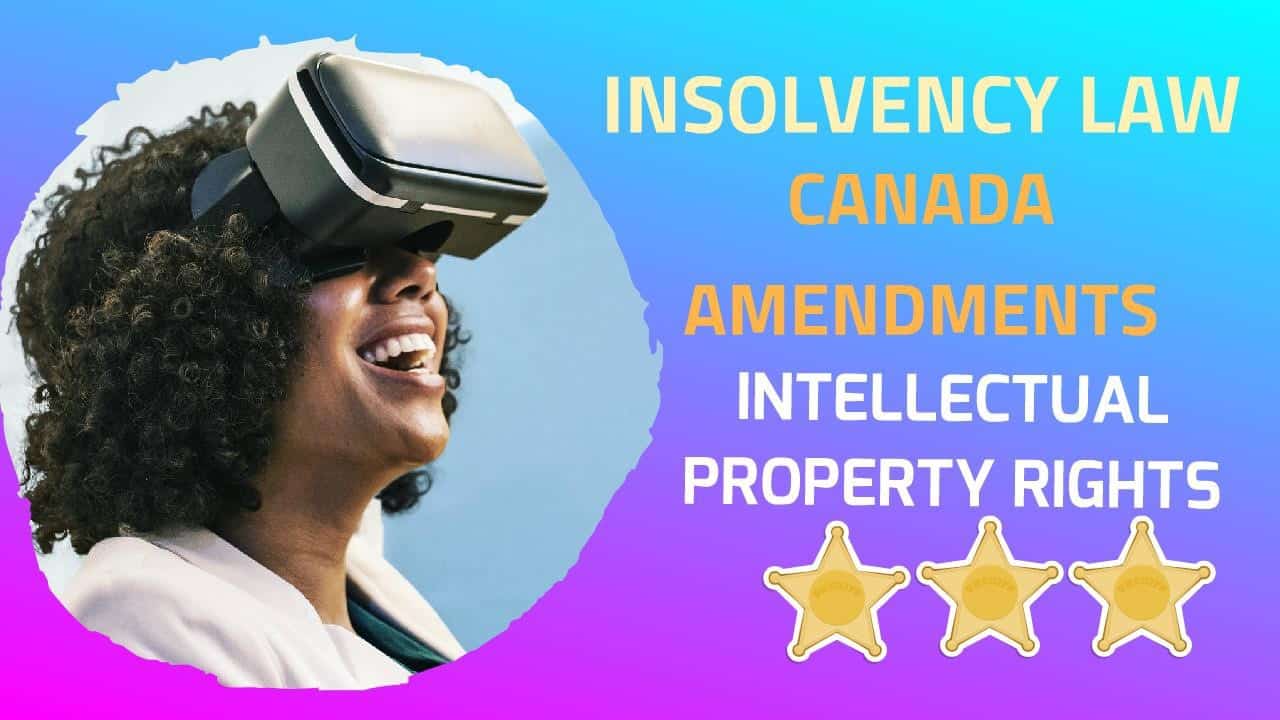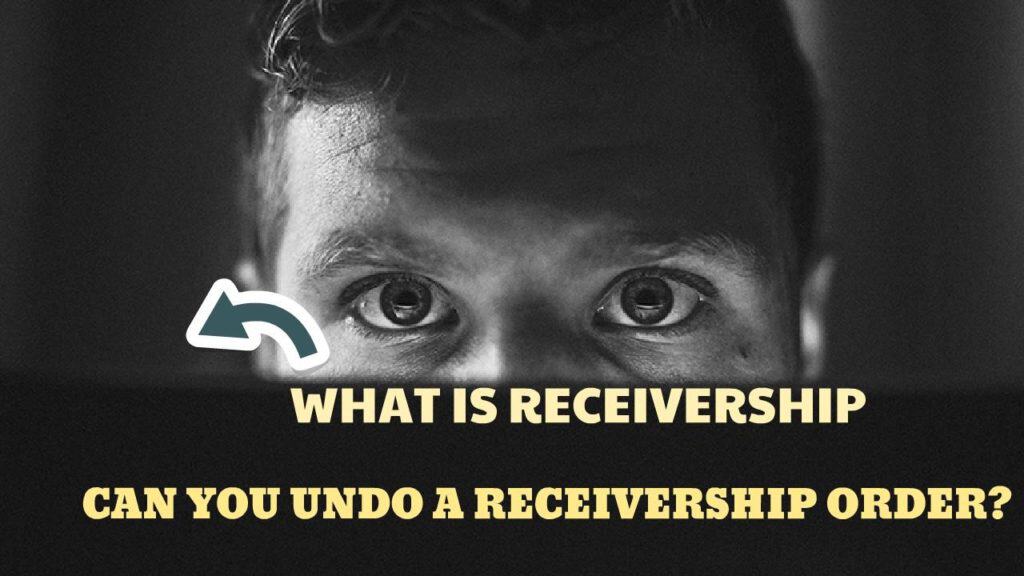[monkeytools msnip=”https://monkeyplayr.com/playr.php?u=5173&p=21691″]
Insolvency Canada news
The Federal government published in the Canada Gazette, Part II, Volume 153, Number 18, its intention to amend Canadian insolvency law for intellectual property rights (IP). On November 1, 2019, those changes came into effect. This change was part of the Canadian 2019 Budget. In Brandon’s Blog, I will discuss what the changes are and why they were made.
Insolvency law amendments for IP in Canada
Amendments relating to how IP is treated under Canadian insolvency law were made to the Bankruptcy and Insolvency Act (R.S.C., 1985, c. B-3) (BIA) and the Companies’ Creditors Arrangement Act (R.S.C., 1985, c. C-36) (CCAA) was made. The BIA controls liquidations and restructurings for people and companies, and the CCAA covers large company restructurings.
The changes are meant to shield IP user rights in cases where the IP licensor becomes insolvent.
The BIA, as well as CCAA changes in the Budget Implementation Act, 2019, No. 1, are intended to improve retired life protection by making the insolvency procedure fairer and much more clear.
Previous Canadian IP insolvency law
Previously, Canadian insolvency law only explicitly dealt with IP in restructuring proceedings. Both the BIA and the CCAA allows for a debtor to disclaim or resiliate agreements. There are certain conditions that the debtor business must meet. This essentially boils down to being able to prove that the agreement in question is either so onerous and/or costly to the debtor business, that a successful restructuring is impossible if the debtor must continue honouring that agreement.
Specifically, as it relates to IP, the BIA, and CCAA if a debtor who is a licensor under an IP agreement disclaims the agreement, the licensee has rights. The licensee can continue to use the IP and gain all benefits it had bargained for, as long as the licensee continues to perform its responsibilities under the IP agreement concerning the use of that IP.
There was no such equivalent section for the receivership or bankruptcy of the debtor. So, if there was a liquidation, the licensee was not protected the same way they would be if the licensor debtor business disclaimed the agreement in financial restructuring.
Insolvency law reform
The amendments in Budget Implementation Act, 2018, No. 2 were done to protect copyright (IP) individual rights in situations where the IP licensor comes to be insolvent.
Effective for all filings beginning on November 1, 2019, or later, there are changes to the BIA and the CCAA, Canada’s main insolvency statutes. The November 1 amendments are done so that the rights of a licensee under an IP agreement where the licensor has disclaimed the agreement will be the same in a financial restructuring or a liquidation through either receivership or bankruptcy.
The following modifications accomplish the goal of safeguarding IP customer’s rights in instances where the IP licensor ends up being insolvent:
- Many times as part of a corporate restructuring, the Court authorizes the company that filed a Notice of Intention To Make a Proposal, or a Proposal, to sell assets. The new amendments now make it so that if the corporation being restructured is the licensor under an IP agreement and sells it, the licensee retains its rights to use the IP, as long as they are and stay current under the agreement.
- If a bankruptcy trustee (now called a licensed insolvency trustee) (Trustee) administering the bankruptcy (or receivership) of a licensor under an IP agreement sells the agreement, the licensee retains its rights under that agreement. Again, the licensee must be current in its obligations to continue enjoying the benefit of the IP agreement.
- The Trustee disclaims the debtor licensor’s interest in an IP agreement as part of a bankruptcy (or receivership) administration. The licensee will continue to enjoy the rights and benefits of the IP agreement as long as it is current in all of its responsibilities under that same agreement.
- If that IP is sold in a CCAA restructuring, the CCAA legislation has now been amended, for administrations that began after October 31, 2019, offers that an IP licensee in excellent standing can continue to utilize the IP.
Proposed BIA wording for IP insolvency proceedings
These are new amendments. There have not been any court decisions on these new amendments yet. The new legislation is not available yet as far as I know. However, my understanding is that the BIA will be amended, in part, to implement the changes concerning IP agreements as I have discussed, along the following lines:
“Intellectual property — sale or disposition
246.1 (1) If the insolvent person or the bankrupt is a party to an agreement that grants to another party a right to use intellectual property that is included in a sale or disposition by the receiver, that sale or disposition does not affect that other party’s right to use the intellectual property — including the other party’s right to enforce an exclusive use — during the term of the agreement, including any period for which the other party extends the agreement as of right, as long as the other party continues to perform its obligations under the agreement in relation to the use of the intellectual property.
Intellectual property — disclaimer or resiliation
(2) If the insolvent person or the bankrupt is a party to an agreement that grants to another party a right to use intellectual property, the disclaimer or resiliation of that agreement by the receiver does not affect that other party’s right to use the intellectual property — including the other party’s right to enforce an exclusive use — during the term of the agreement, including any period for which the other party extends the agreement as of right, as long as the other party continues to perform its obligations under the agreement in relation to the use of the intellectual property.”
Summary
I hope you enjoyed this Brandon’s Blog on the insolvency amendments effective November 1, 2019. Are you or your company in need of financial restructuring? The financial restructuring process is complex. The Ira Smith Team understands how to do a complex corporate restructuring. However, more importantly, we understand the needs of the entrepreneur. You are worried because your company is facing significant financial challenges. Your business provides income not only for your family. Many other families rely on you and your company for their well-being.
The stress placed upon you due to your company’s financial challenges is enormous. We understand your pain points. We look at your entire situation and devise a strategy that is as unique as you and your company’s problems; financial and emotional. The way we deal with this problem and devise a corporate restructuring plan, we know that we can help you and your company too.
We know that companies facing financial problems need a realistic lifeline. There is no “one solution fits all” approach with the Ira Smith Team. That is why we can develop a company restructuring process as unique as the financial problems and pain it is facing. If any of this sounds familiar to you and you are serious in finding a solution, contact the Ira Smith Trustee & Receiver Inc. team today.
Call us now for a free consultation. We will get your company back on the road to healthy stress-free operations and recover from the pain points in your life, Starting Over, Starting Now.














